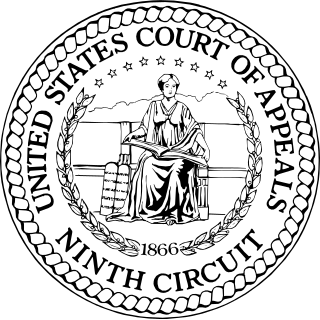Tax deduction is a reduction of income that is able to be taxed and is commonly a result of expenses, particularly those incurred to produce additional income. Tax deductions are a form of tax incentives, along with exemptions and credits. The difference between deductions, exemptions and credits is that deductions and exemptions both reduce taxable income, while credits reduce tax.

In financial accounting, a cash flow statement, also known as statement of cash flows, is a financial statement that shows how changes in balance sheet accounts and income affect cash and cash equivalents, and breaks the analysis down to operating, investing, and financing activities. Essentially, the cash flow statement is concerned with the flow of cash in and out of the business. As an analytical tool, the statement of cash flows is useful in determining the short-term viability of a company, particularly its ability to pay bills. International Accounting Standard 7 is the International Accounting Standard that deals with cash flow statements.

A promissory note, sometimes referred to as a note payable, is a legal instrument, in which one party promises in writing to pay a determinate sum of money to the other, either at a fixed or determinable future time or on demand of the payee, under specific terms.
For households and individuals, gross income is the sum of all wages, salaries, profits, interest payments, rents, and other forms of earnings, before any deductions or taxes. It is opposed to net income, defined as the gross income minus taxes and other deductions.
A structured sale or structured installment sale, is a special type of installment sale pursuant to the Internal Revenue Code. In an installment sale, the seller defers recognition of gain on the sale of a business or real estate to the tax year in which the related sale proceeds are received. In a structured sale, the seller is able to pay U.S. Federal income tax over time while having the seller's right to receive those payments guaranteed by a high credit quality alternate obligor. This obligor assumes the buyer's periodic payment obligation. Transactions can be arranged for amounts as small as $100,000.
For federal income tax purposes, the doctrine of constructive receipt is used to determine when a cash-basis taxpayer has received gross income. A taxpayer is subject to tax in the current year if he or she has unfettered control in determining when items of income will or should be paid. Unlike actual receipt, constructive receipt does not require physical possession of the item of income in question.
Helvering v. Horst, 311 U.S. 112 (1940), is an opinion of the United States Supreme Court which further developed the “fruit-and-tree” metaphor established in Lucas v. Earl. Horst is the leading case that applies the assignment of income doctrine to income from property.
In United States income tax law, an installment sale is generally a "disposition of property where at least 1 loan payment is to be received after the close of the taxable year in which the disposition occurs." The term "installment sale" does not include, however, a "dealer disposition" or, generally, a sale of inventory. The installment method of accounting provides an exception to the general principles of income recognition by allowing a taxpayer to defer the inclusion of income of amounts that are to be received from the disposition of certain types of property until payment in cash or cash equivalents is received. The installment method defers the recognition of income when compared with both the cash and accrual methods of accounting. Under the cash method, the taxpayer would recognize the income when it is received, including the entire sum paid in the form of a negotiable note. The deferral advantages of the installment method are the most pronounced when comparing to the accrual method, under which a taxpayer must recognize income as soon as he or she has a right to the income.

Cowden v. Commissioner, 289 F.2d 20, outlined the factors used to determine whether something received is a cash equivalent, in other words, whether something received is taxable when it was received or when it was assigned. The court observed two main doctrines in determining when something is taxable. The court relied on the doctrines of constructive receipt and cash equivalence while reiterating that substance rather than form should control income tax laws.

A basis of accounting is the time various financial transactions are recorded. The cash basis and the accrual basis are the two primary methods of tracking income and expenses in accounting.
The all-events test, under U.S. federal income tax law, is the requirement that all the events fixing an accrual-method taxpayer's right to receive income or incur expense must occur before the taxpayer can report an item of income or expense.

The installment sales method is one of several approaches used to recognize revenue under the US GAAP, specifically when revenue and expense are recognized at the time of cash collection rather than at the time of sale. Under the US GAAP, it is the principal method of revenue recognition when the recognition occurs subsequently to the sale.

Gold Coast Hotel & Casino v. United States, 158 F.3d 484, was a court case that addressed whether a casino, using the accrual method of accounting, could deduct the value of slot club points earned by slot club members in the tax year in which the members accumulated the minimum points required to redeem a prize, or whether the casino had to wait to deduct the value of the slot club points until the members actually redeemed them.

Grynberg v. Commissioner, 83 T.C. 255 (1984) was a case in which the United States Tax Court held that one taxpayer's prepaid business expenses were not ordinary and necessary expenses of the years in which they were made, and therefore the prepayments were not tax deductible. Taxpayers in the United States often seek to maximize their income and decrease their tax liability by prepaying deductible expenses and taking a deduction earlier rather than in a later tax year.
Schlude v. Commissioner, 372 U.S. 128 (1963), is a decision by the United States Supreme Court in which the Court held that, under the accrual method, taxpayers must include as income in a particular year advance payments by way of cash, negotiable notes, and contract installments falling due but remaining unpaid during that year. In doing so, the Court tossed aside the matching principle in favor of the earlier-of test.

Artnell Company v. Commissioner, 400 F.2d 981 is a decision by the 7th Circuit Court of Appeals, in which the court, distinguishing from the holding in Schlude v. Commissioner, held that accrual method taxpayers are not required to include prepayments in gross income when there is certainty as to when performance would occur.

Davis v. Commissioner, T.C. Memo. 1978-12 (1978), was a case in which the United States Tax Court held that in order to have constructive receipt, a taxpayer must have notice of the attempt to transfer funds to the taxpayer.

Warren Jones Company v. Commissioner of Internal Revenue, 524 F.2d 788 was a taxation decision by the United States Court of Appeals for the Ninth Circuit.
In the United States, the question whether any compensation plan is qualified or non-qualified is primarily a question of taxation under the Internal Revenue Code (IRC). Any business prefers to deduct its expenses from its income, which will reduce the income subject to taxation. Expenses which are deductible ("qualified") have satisfied tests required by the IRC. Expenses which do not satisfy those tests ("non-qualified") are not deductible; even though the business has incurred the expense, the amount of that expenditure remains as part of taxable income. In most situations, any business will attempt to satisfy the requirements so that its expenditures are deductible business expenses.

Amend v. Commissioner, 13 T.C. 178 is a United States Tax Court decision concerning the timing of the realization of gains.






